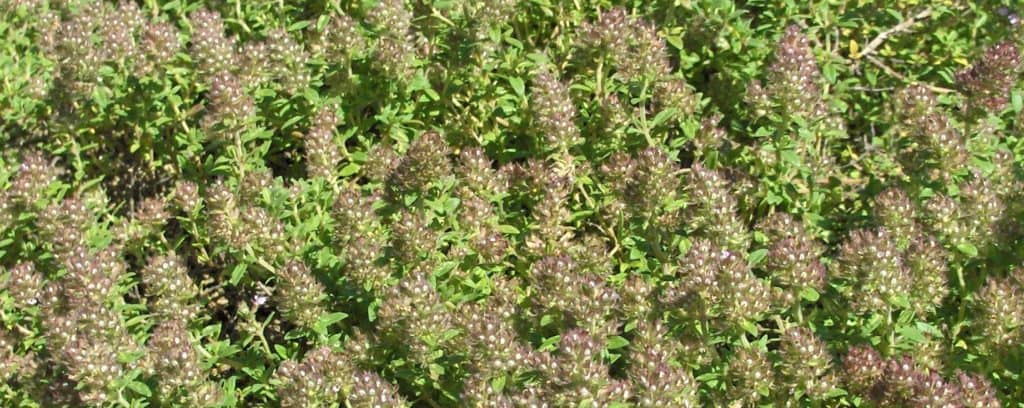Red Creeping Thyme is a pretty, prolific plant that will grow in most of the United States, providing nice flowers and lots of ground cover. Here is what you should know about the plant.
Red creeping thyme (the Coccineus group of Thymus praecox) is a hardy, low-growing perennial plant that is know for it’s red-purple, aromatic flowers. It’s easy to grow and easy to maintain, working well in both pots and gardens. Expect a height of 3-6 inches at full growth and strong return and spread from year to year.
Red creeping thyme is a ground coverage plant that grows quickly and thickly in plant hardiness zones 4-9, with 5-8 being optimal for its growth.
Any well-drained soil will be fine for the plant with best growth being seen in neutral soil that isn’t too wet. This Mediterranean plant prefers dryer climates so beware of standing water nearby or of overwatering it.
The plant can grow in full sun, but is completely fine in partial shade, giving it considerable versatility for gardeners.
Red creeping thyme is a plant that will grow and spread aggressively. This makes it very good for ground coverage, but it can be too good at times. Some people consider it to be an invasive plant because of its hardy nature and ability to spread by growing its stems out and “creeping” along the ground, dropping roots into the soil as it goes.
Being part of the thyme family, the plant as a pleasant, herbaceous smell to it. This smell can be noticed when nearby, but is truly release when the leaves are crushed. Walking on the plant will bring up the smell considerably, given the area a pleasant, spicy air to it. The plant is tough enough to deal with some foot traffic but isn’t able to withstand multiple walkings upon it.
The plant is an evergreen, so it’ll stay handsome through the year. Despite its looks, the plant should only be divided in the late fall or early spring, before and after the growing period and not during a time of frost.
Because of its thickness and rapid spreading it is considered a lawn alternative, as it require less maintenance than grass and can be put over large patches without worrying about ground showing through beneath it. This same thickness will suppress weeds and mean minimal care is required.
Red Creeping Thyme And Deer
While almost not plant will completely turn away a hungry whitetail deer, Red creeping thyme is consider by many people to be deer-resistant. This is to say that the plant will deter deer from eating it and plants around it when they are presented with better options.
Top Image Credit: Wikipedia

